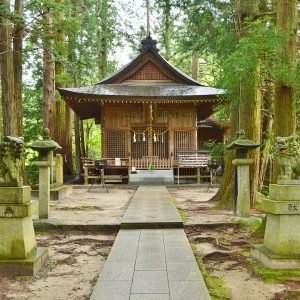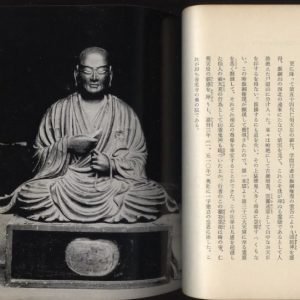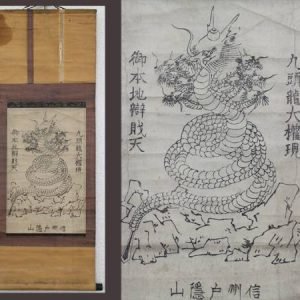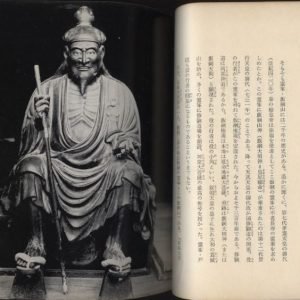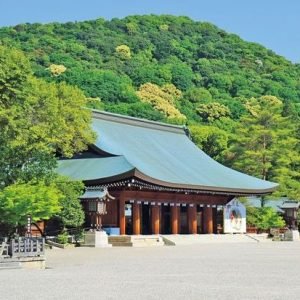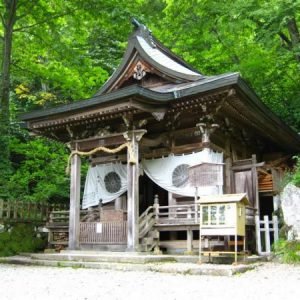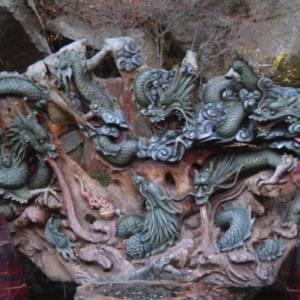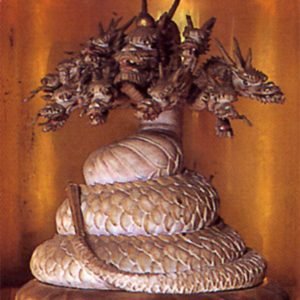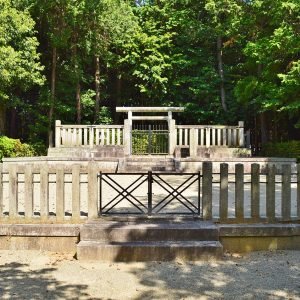The legends of the opening of Togakushi Mountain in Shinshu (Nagano) originate with the myths of “Amano-Iwato”, translated as “The cave of the sun goddess” or “heavenly rock cave”. According to the Kojiki (Records of Ancient Matters), the devious actions of Susano’o, the Japanese god of storms, drove his sister Amaterasu, the sun goddess, into the Ame-no-Iwato cave and the world was cast into darkness.
To get the sun goddess out of the cave, the other gods called Yao-yorozu-no-kami threw a wild party outside of the cave. The goddess Ame-no-Uzume-no-Mikoto performed a crude and sexual dance, making everyone laugh and excited. The sun goddess grew curious about the noise and decided to look out of the cave entrance. When she peeked out, she became fascinated by her own reflection in the Yata no Kagami mirror which the other gods had crafted and hung before the cave for that purpose. She stood there, like in a trance and then Ame-no-tajikarao forced the cave open and the world was full of light once again. As Amaterasu stepped out of the cave a holy seal was placed on it so that she could never go back into hiding.
Then later, the Izumo Achi-Zoku, Chinese/Baekje(Kudara) blood relatives of the legendary 8th Emperor of Japan, Kōgen-tennō (孝元天皇) are said to have enshrined the indigenous nine-headed dragon known as Kuzuryū there. The Achi-Zoku are the families descended from Achi no Omi, the gentleman from my previous post.
In addition, the legendary Gakumon Gyoja, a student of the founder of Shugendo, En no Gyoja entered the mountain in 849 CE and sealed the nine-headed dragon inside the Ame-no-Iwato cave as the guardian god of the mountain. It is said that he built Togakushi Temple there and became the administrator. Towards the end of the Heian Period (794-1185 CE) Togakushi had become a well know center of Shugendo activities.
What I find most interesting about this is that it was the descendants of Achi-no-Omi from Izumo that originally went to the mountain and enshrined a nine-headed dragon there. This makes some historical sense as one of the major families that populated the Shinano and Togakushi regions was the Inukai Clan, a clan with a direct blood connection to Achi no Omi and the Sakanoue Clan. All families that are tied to the history and lineage of both the Gyokko Ryu and Togakure Ryu.
Another point that I find compelling is that the tomb of Emperor Kogen is in Kashihara, Nara. Very near the areas that were settled by the descendants of Achi no Omi, the Sakanoue and the Inukai. The same place that Takamatsu Sensei lived out the last few decades of his life.
Sean Askew – 導冬 Dōtō
Bujinkan Kokusai Renkoumyo
12/13/2019
References and sources for this post…
Ina. (1975). (n.p.): (n.p.). – Page 8
善光寺史. (2004). Japan: 東京美術 – Page 554
新訳日本神話: 出雲神話の原像. (1989). Japan: 西日本文化出版 – Page 173
信州の韓来文化. (1985). Japan: 銀河書房 – Page 73


